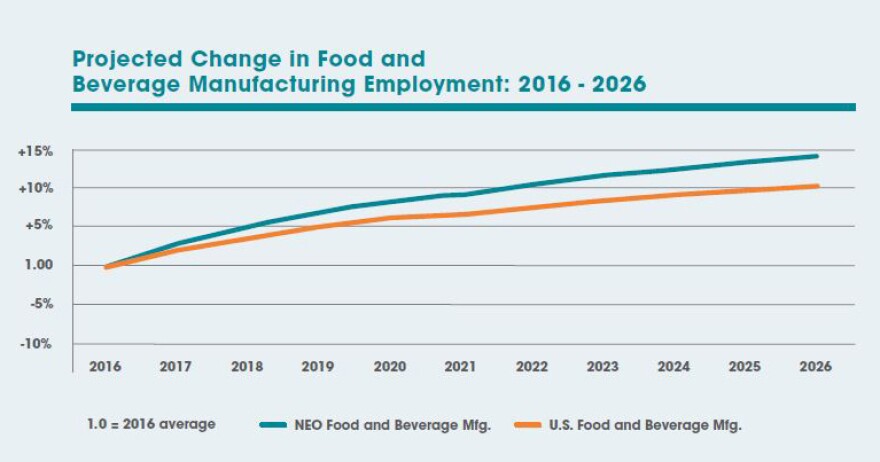Manufacturing jobs may be declining, but at least two Northeast Ohio industries are expected to buck the trend in 2018.
That's according to Jacob Duritsky, Vice President of Strategy and Research at the nonprofit economic development organization Team NEO. For years, Duritsky has focused on trying to understand the forces that shape Northeast Ohio’s economy. He forecasted a few economic stories he expects to play out over the next year.
Food Manufacturing
You know those little Milano cookies everybody loves? They're not just delicious – they’re a symbol of one of the region's biggest growth industries.
Duritsky said food manufacturing has been "remarkably hot" in the past few years. Companies are increasingly choosing to expand their operations here because the region has manufacturing know-how and is surrounded by agriculture, he said. Some recent expansions include big names like Nestle in Solon, Daisy Brand in Wayne County, and Pepperidge Farm in Huron County.
According to a May 2017 analysis by Team NEO, about 22,000 people in Northeast Ohio work in food manufacturing. That number is expected to grow by 3,000 net jobs over the next decade—an increase of nearly 14 percent, according to the report.
In fact, food is one of only two manufacturing sectors that Duritsky expects will increase in the total number of workers over the next decade. The other is aerospace.

Aerospace Manufacturing
"Globally, there's a ton of demand for airplanes, particularly of the small and midsize airplanes," said Duritsky.
And because aircraft orders can often take several years to fulfill, that demand is likely to keep the industry stable for the next several years, he said. That's good news for regional aerospace manufacturers that make equipment and plane parts, including big corporations like Eaton and Parker Hannifin, and smaller, more specialized machining shops.
"It's not the direct impact of having a Boeing, but it's really the second- and third-tier supply shops that should benefit," he said.
Automotive Manufacturing
For the past few years, U.S. auto sales were strong, thanks in part to an abundance of relatively cheap credit. However, that began to change this past year, in part because people are keeping their cars longer. According to the U.S. Department of Transportation, the average age of cars on the road in 2016 was 11.6 years-old. That's compared to 10.2 years-old in 2006.
Duritsky said that trend will probably shrink revenues for regional auto suppliers.
"It's certainly not going away," he said, "but we probably won't see the level of growth we saw, and that has implications for a lot of things like fabricated metal and products that go into the cars that we produce.”
According to research by Team NEO, Ohio is the largest manufacturer of heavy-duty trucks in the country and the second-largest supplier of automotive parts.



